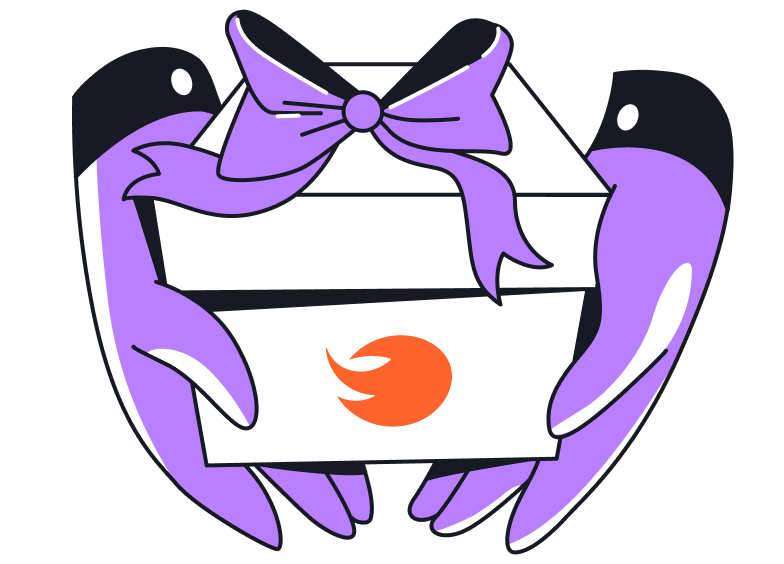What Is Internet Marketing?
Internet marketing (also known as online marketing) is the practice of using online channels to promote a brand, product, or service to a target audience. And can build brand awareness, nurture leads, and turn customers into loyal advocates.
It encompasses various techniques designed to attract, engage, and convert potential customers across online channels.
Those techniques include:
- Content marketing
- Search engine optimization
- Social media marketing
Unlike traditional marketing channels such as TV and direct mail (which have limited reach), internet marketing can help brands forge and maintain profitable relationships by reaching audiences where they spend the most time: online.
Digital marketing, internet marketing, and web marketing are often used interchangeably.
But digital marketing extends to some offline channels (e.g., SMS and electronic billboards). Otherwise, they include most of the same methods.
Ways Internet Marketing Is More Effective Than Traditional Channels
Although both traditional and internet marketing can reach many prospects, internet marketing allows you to make sure your business gets in front of more qualified audiences. Meaning the people who are most likely to make a purchase from you.
Plus, you can point those audiences directly to your website to take the next step with most digital marketing channels.
Here are some other benefits of internet marketing to consider:
It Builds Trust and Credibility
Brands with a strong online presence can more easily build trust and credibility in the eyes of their target audience. Which makes it easier to earn new customers. And encourages brand loyalty.
For example, look at the search engine results page (SERP) when you search the term “Zillow.” The results show a company with helpful content, industry credibility, and a trusted reputation.
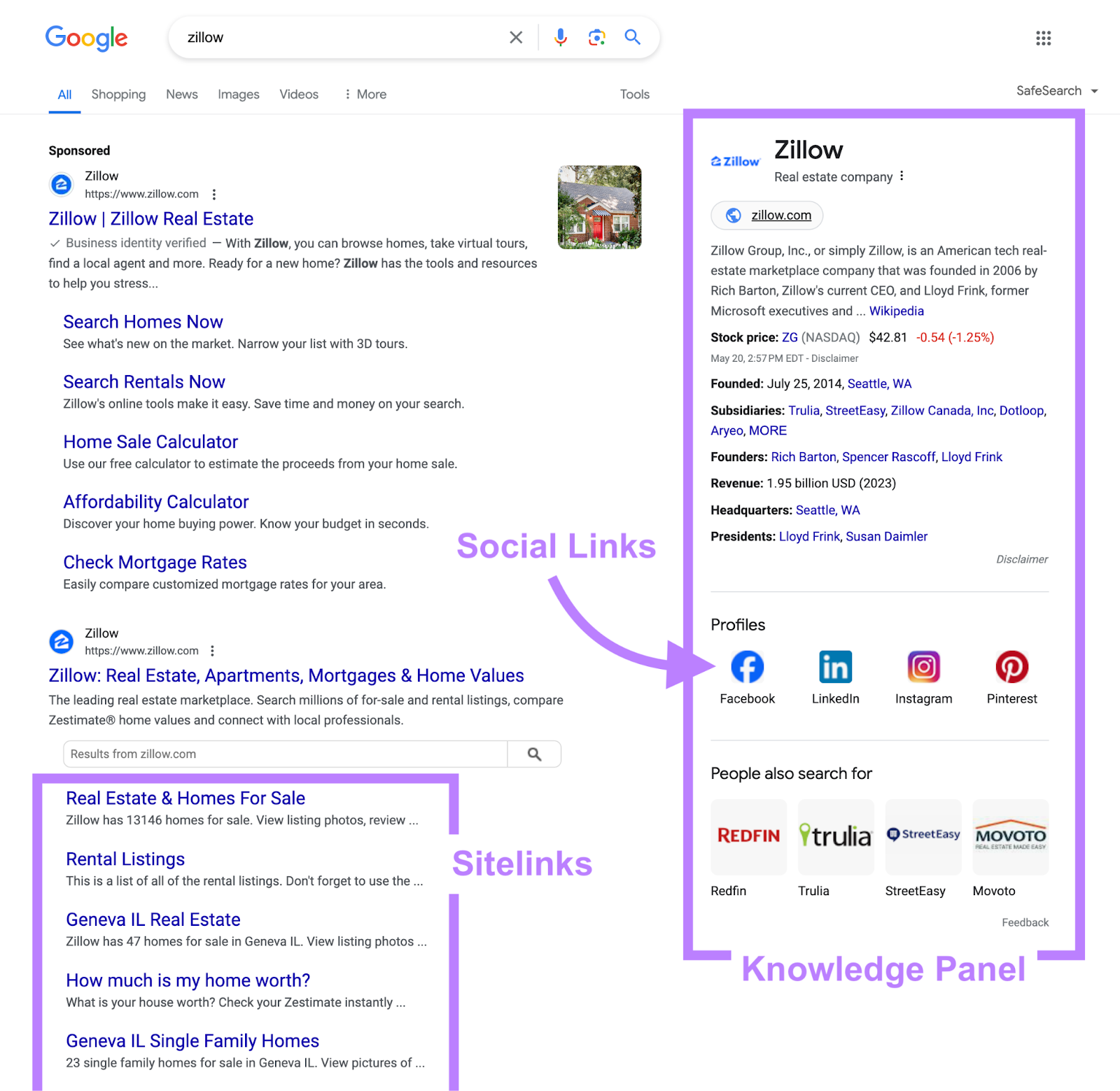
There are many ways to build credibility through internet marketing. Such as:
- Creating helpful content that ranks in the SERPs
- Encouraging customers to leave reviews, which will likely lead to more positive reviews
- Sharing helpful resources and information on social media accounts
- Getting mentioned by influencers or on authoritative websites
When your brand name appears in many places on the internet (and with high-quality content), users are more likely to see you as a trusted industry leader. So, they’ll be more likely to remember you when it comes time to make a purchase.
It Has Instant Global Reach
Over two-thirds of the world’s population is on the internet. And marketing online allows you to reach many of those 5.44 billion users who may be willing to engage with your content.
Your reach is much smaller when using traditional marketing channels like direct mail and billboards.
For example, a $2,500 billboard can only reach people who pass it. That tends to limit its audience to the people of one town or city. And even then, you don’t know who will see it.
But you could spend less than $7 on an Instagram ad that achieves 1,000 impressions (i.e., users see it 1,000 times).AndInstagram’s targeting features (more on those below) ensure you reach people actually interested in your product.
It’s Highly-Targeted
Marketing in the internet age allows you to deliver personalized content to specific audiences—something that 71% of consumers expect brands to do. Which helps you build relationships and move your most likely buyers closer to making a purchase.
For example, the clothing brand Uniqlo uses email subscribers’ locations to recommend relevant products based on the weather:

Image Source: Really Good Emails
To create more personalized experiences, you can target audiences based on where they are in the marketing funnel. The stages are:
- Awareness: People who aren’t yet aware of what your business offers
- Consideration: People who are actively considering products or services
- Conversion: Audiences who are ready to make a purchase decision
- Loyalty: Past customers who may be willing to buy again
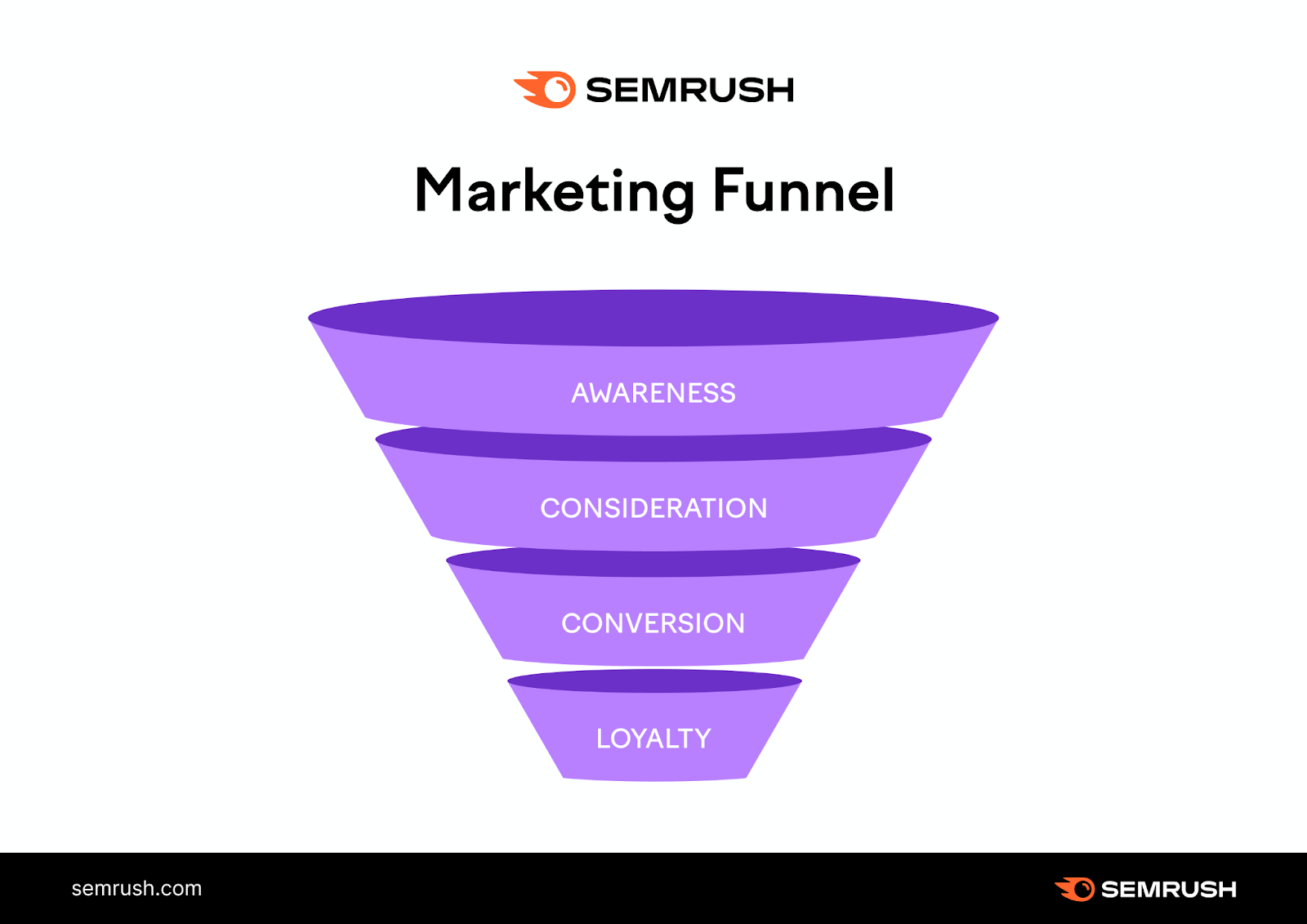
Here are some examples of how to do this kind of targeting:
- Build a “lookalike” audience in Meta Ads to reach new audiences who resemble existing customers
- Create high-quality blog posts or videos that answer common questions about your products or services
- Send marketing emails that include promotions, discounts, or sales to entice your audience
- Start a podcast about your industry that keeps loyal customers engaged with your brand
Exactly how you target and personalize will depend on your marketing goals.
It’s Cost-Effective
Internet marketing can lead to a significant return on investment (ROI). Particularly when compared to traditional marketing.
For example, tech startup LiberEat grew traffic by 1,000% in a few months using a thoughtful, inexpensive SEO campaign.
If you’re working with a smaller budget, there are also internet marketing channels that allow you to earn traffic organically. Meaning through unpaid tactics like:
- Blog posts
- Video content
- Social media posts
- Guest blog posts
The affordability of marketing on the internet makes it easier to grow visibility without driving your customer acquisition costs too high.
It Can Be Measured in Real Time
There’s plenty of software that can measure your internet marketing campaigns’ performance. Which helps you know what’s working and what’s not, so you can deliver better results.
More specifically, performance tracking can help you:
- Improve upon past strategies or tactics
- Know exactly what content or links bring customers to your website
- Discover what ad messaging is most engaging
- Identify the most profitable channels and direct your focus accordingly
This level of insight just isn’t possible with traditional marketing channels.
7 Types of Internet Marketing That Work (+ Examples)
Here are seven of the most impactful types of internet marketing for your brand.
1. Content Marketing
Content marketing is the process of creating and distributing high-quality, relevant content that can attract your target audience.
For example, Gerber created this helpful infographic about toddler nutrition to promote their Gerber Graduates product.
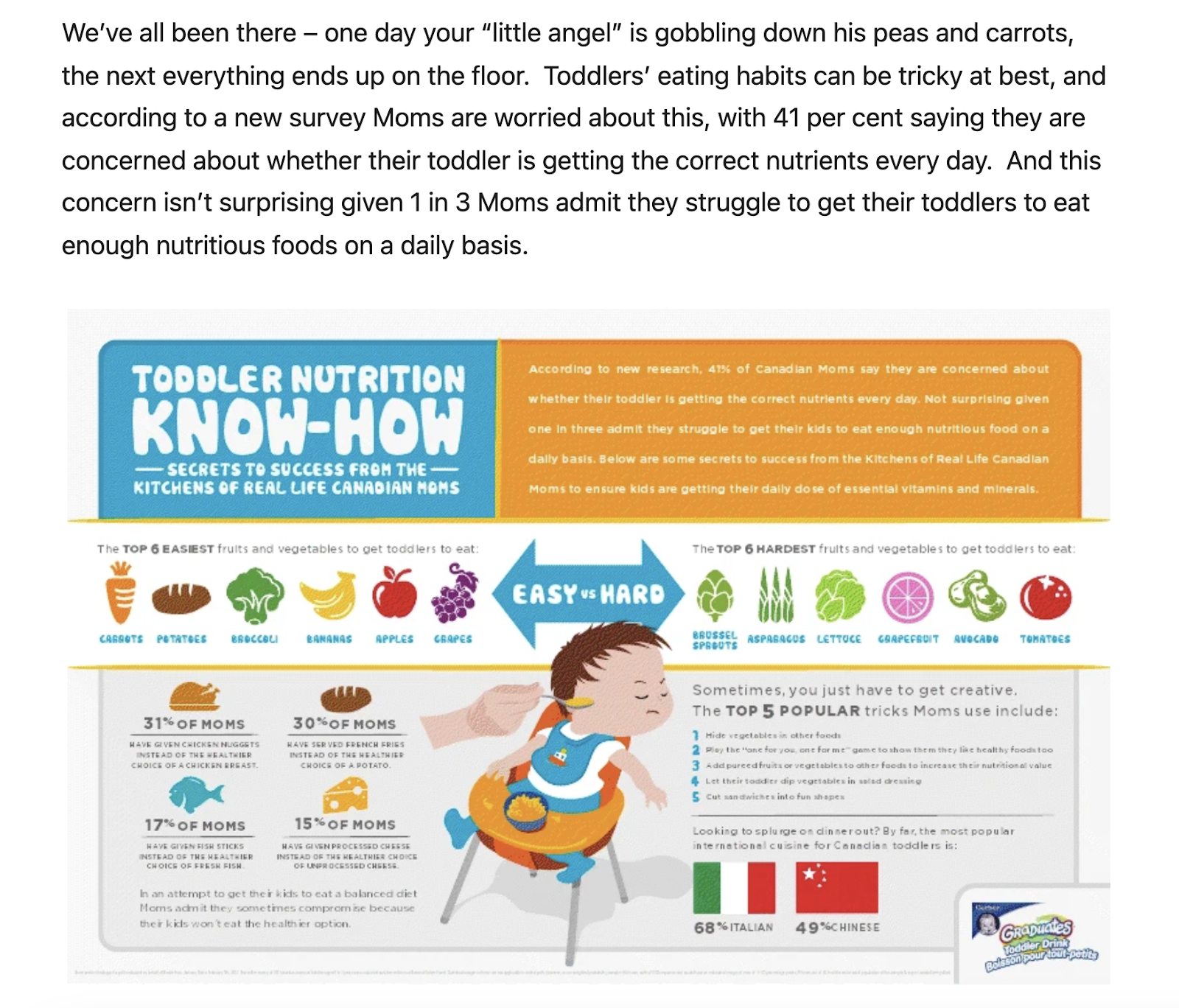
Gerber sent this infographic to multiple influencers. They also published it on their website, posted it on social media, and shared it with their email subscriber list.
They used one piece of content to reach their target audience across all of their marketing channels.
This is why high-quality content is the foundation of online marketing.
And the more content your brand creates, the more opportunities you have to reach your audience. So, review the below content types to get ideas for your own marketing.
Blog Posts
Blog posts are informative articles on your website that provide valuable information to your audience. And answer questions they have about your products, services, or industry.
Like this blog post from Sploot Veterinary Care:
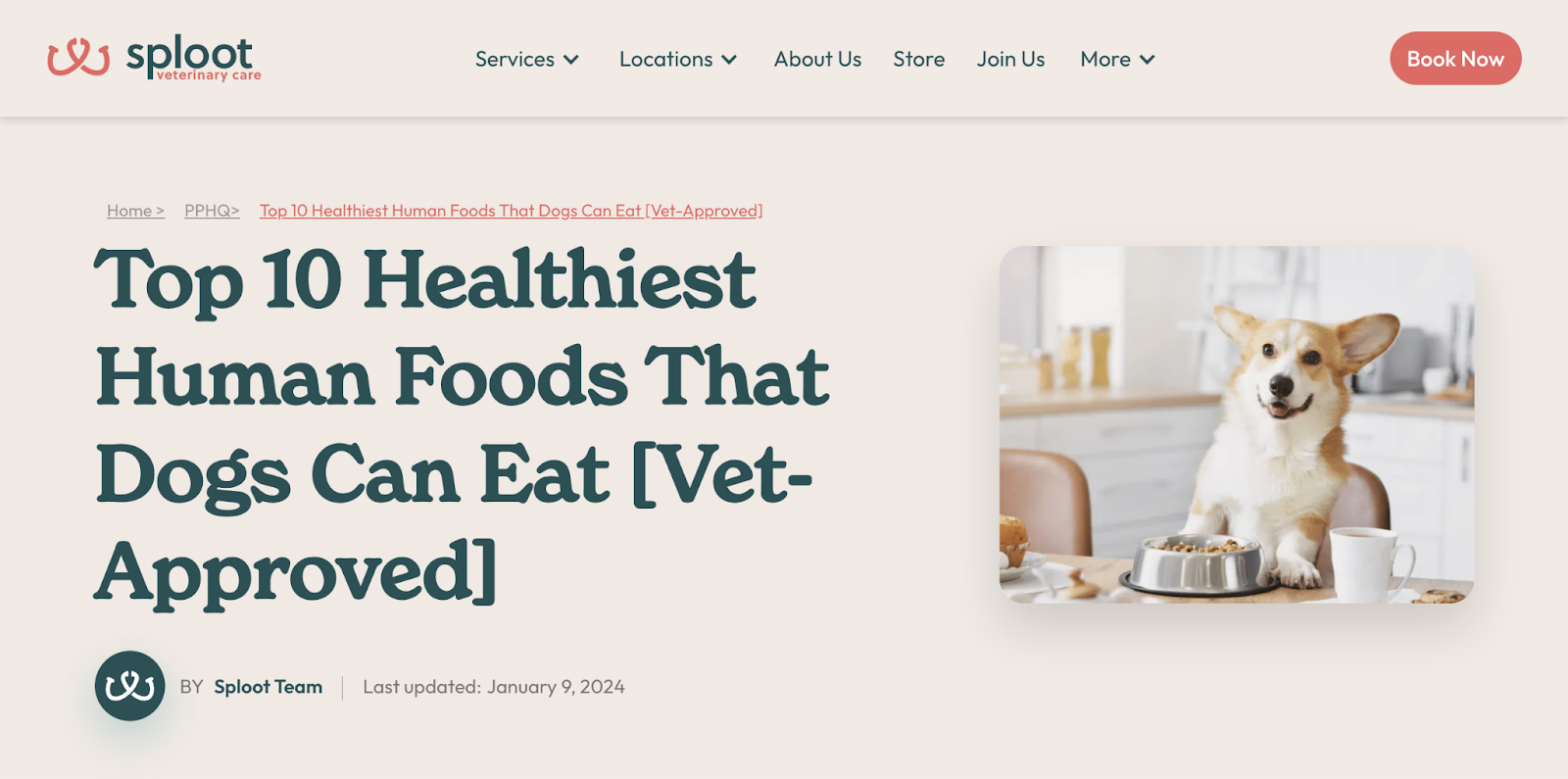
Having lots of high-quality blog posts on your website builds trust and credibility with your target audience.
To create blog posts, you’ll need to:
- Choose topics that are relevant to your industry and target audience
- Do keyword research to find target keywords
- Outline the content and write posts
- Publish the content to your website
One of the biggest benefits of blog posts is that they can rank in search engine results. So, searchers may discover your blog post in the SERPs and click over to your website.
Further reading: How to Write a Blog Post Step by Step
Videos
Video content is ideal for social media platforms like Instagram, YouTube, and TikTok. But you can also link to video content in your blog posts or share videos via email.
For social media, short-form video content is best. Here are some tips for creating it:
- Focus on professional quality
- Make your video the ideal length for the platform you choose
- Get to the point quickly
- Include some type of call to action (CTA)
Further reading: Video Marketing: The Ultimate Guide for 2024
Infographics
Infographics are visual depictions of data or concepts. And combine informative content with engaging visualizations.
They should include:
- A clear narrative or story
- An attention-getting headline
- High-quality design
Infographics can be added to blog posts, shared on social media, etc.
Podcasts
Podcasts are audio files that can be downloaded or streamed. And they’re great for showcasing your industry expertise and keeping your current customers engaged.
Each of your podcast episodes should be dedicated to a clear topic. And you can even feature guests, which gives your brand an opportunity to develop industry partnerships.
Video recordings of podcasts are also useful. Those videos can be cut down into short-form clips you can post on social media.
Further reading: Podcast SEO: Your Guide to Ranking (+ Successful Examples)
Case Studies
For B2B brands, case studies, and are great for showcasing your industry expertise. And detailing how your brand delivered results to customers or clients.
To create a case study, use the below format:
- Choose a data-driven headline that showcases a key result
- Summarize the customer’s background, industry, and goals
- Explain what problem your customer was facing
- Break down the solutions that solved that problem
- Detail the results in quantifiable metrics
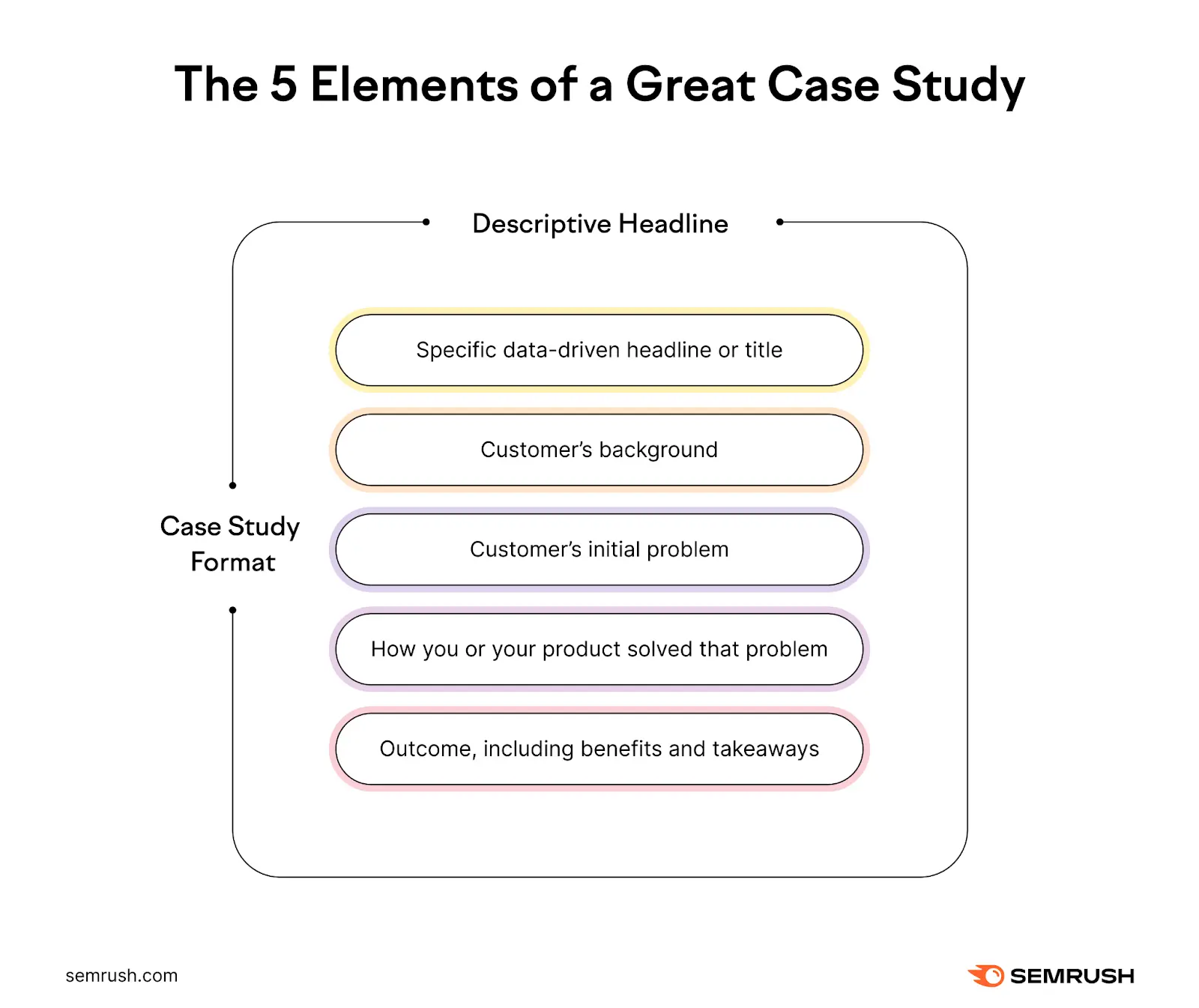
2. Search Engine Optimization (SEO)
SEO is the process of improving a website’s visibility on search engines like Google. To rank as highly as possible in the SERPs, so users are more likely to click through to your content.
Because many buying journeys begin on search engines, a solid SEO strategy is critical to building an effective online presence.
At the highest level, it involves:
- Choosing and targeting strategic keywords
- Creating relevant content
- Forging relationships with other sites and publishers to establish your brand as a trustworthy information source
World Soccer Shop and SoccerPro clearly target the term “soccer jerseys” with their SEO efforts, as they’re the first two organic (i.e., unpaid) sites to appear at the top of the SERP:
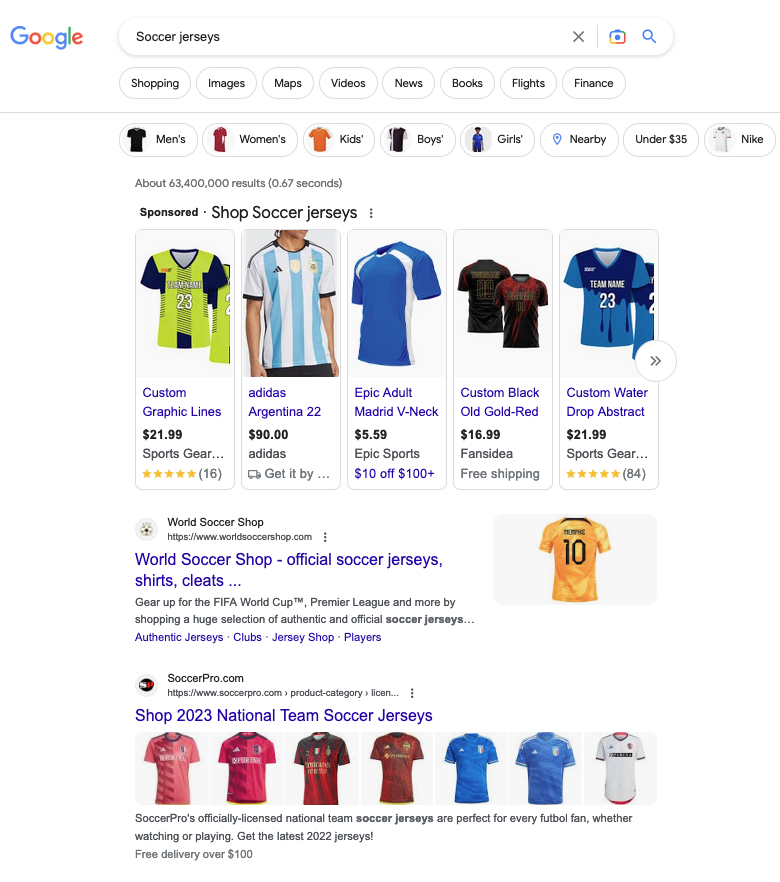
By ranking first and second, these brands are likely to get many clicks from Google users. Our State of Search report indicates the click-through rate (CTR) for the top result is about 22%. And it declines from there.
Although SEO can be technical, your main goal should be to fulfill users’ search needs by crafting high-quality, relevant content.
And you can find the best keywords to target using Semrush’s Keyword Magic Tool.
Enter a keyword related to your products or services, select your target location, and then click “Search.”

You’ll see a table of keyword variations related to your seed keyword.
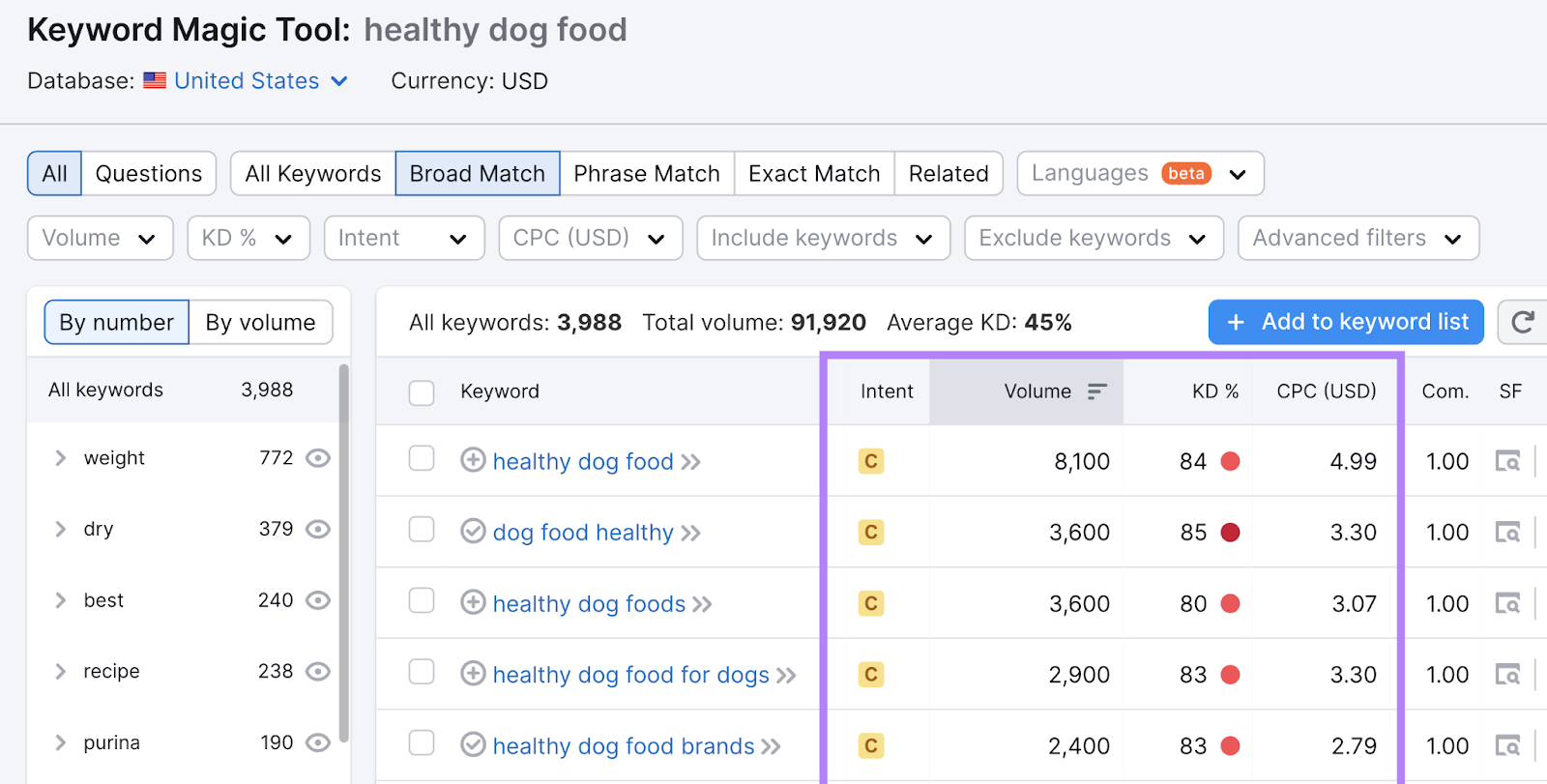
From there, you might want to look into the suggested groups and subgroups to the left of the main table. To identify terms that are particularly relevant to your niche.
When choosing keywords, consider the following:
- Search intent (“Intent”): The reason behind the user’s search. There are four main types (informational, navigational, commercial, and transactional), and the intent type can help you determine how a keyword should be used.
- Search volume (“Volume”): The average number of times a keyword is searched for each month
- Keyword Difficulty (KD %”): How challenging it is to rank in the top ten Google results for a given term. Higher keyword difficulty means more competition
- Cost per click (“CPC”): The average price (USD) that advertisers pay for a user’s click on an ad triggered by that keyword

3. Social Media Marketing
Social media marketing involves using social networks to promote a brand or its products or services.
Companies can use sites like Facebook, Twitter, Instagram, LinkedIn, and TikTok to:
- Post relevant pictures, videos, stories, and live broadcasts
- Respond to mentions to maintain their reputations
- Engage with followers and other users to build a community around their brand and offerings
For example, Mint Mobile uses Facebook to engage with followers and update them on new products:
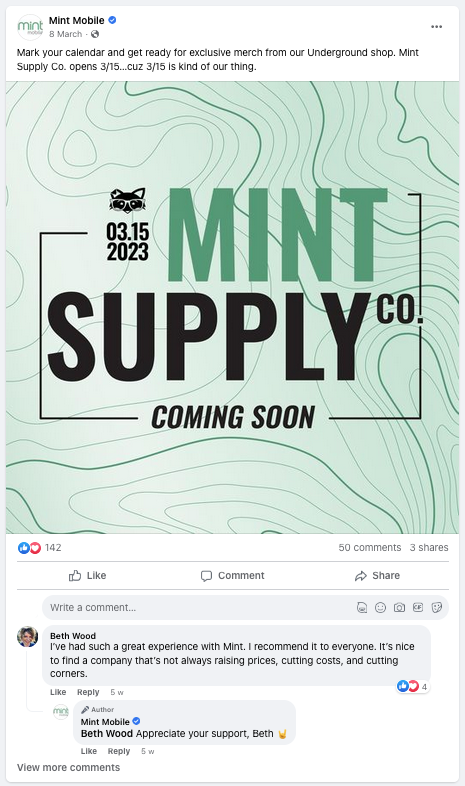
Social media marketing also involves social media advertising. Which is when brands pay to put their social ads in front of relevant users.
4. Email Marketing
Email marketing is the practice of sending messages to subscribers’ email addresses. So, this channel works best for nurturing leads and strengthening relationships with existing customers.
Homeware brand Floyd uses this channel to introduce new products:
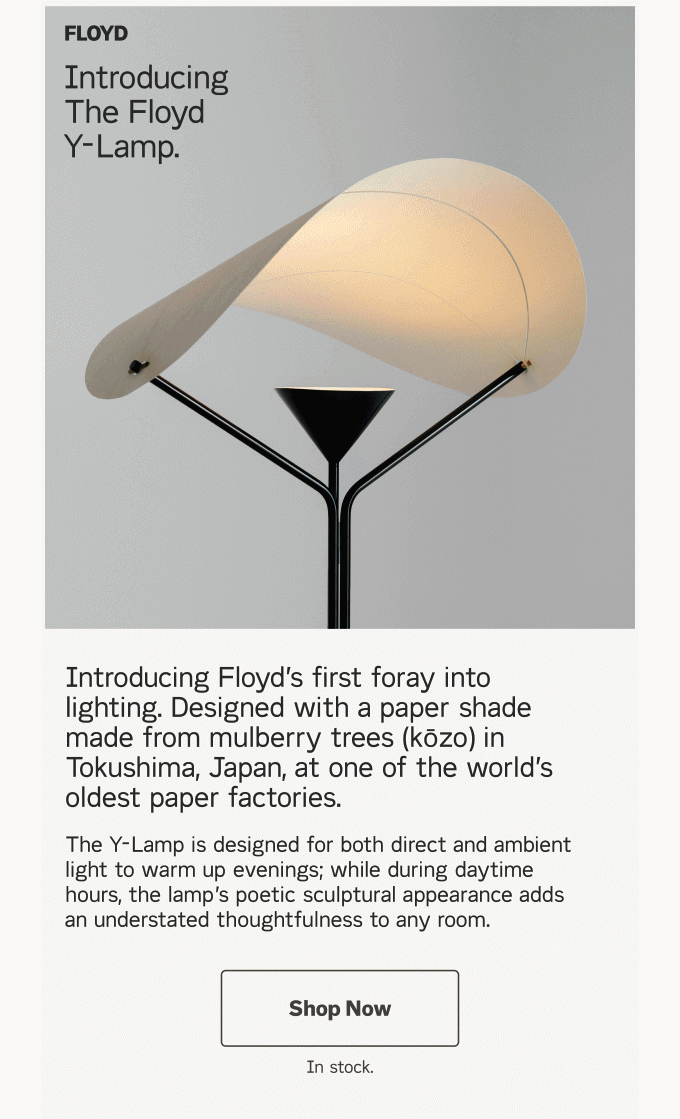
Image Source: Really Good Emails
You can also build brand awareness by sending high-quality content that recipients can forward to friends and family.
5. Online Advertising
Online advertising means paying to put your brand in front of targeted users.
The umbrella term encompasses the following:
- Paid search: Search engine ads that appear at the top of the SERPs
- Social media ads: Ads that appear on social media platforms like Facebook, Instagram, Twitter, TikTok, and LinkedIn
- Display ads: Banner, video, and text ads that appear on popular websites
- Shopping ads: Ads that feature detailed information about the products your business sells
Most of these channels use a pay-per-click (PPC) model.
This means you pay every time someone clicks on your ad. And the cost per click will depend on your target keyword—competitive keywords are more expensive.
On social media, paid ads appear throughout users’ feeds and often look like organic (i.e., regular) posts. Like this one on Facebook from Zapier:
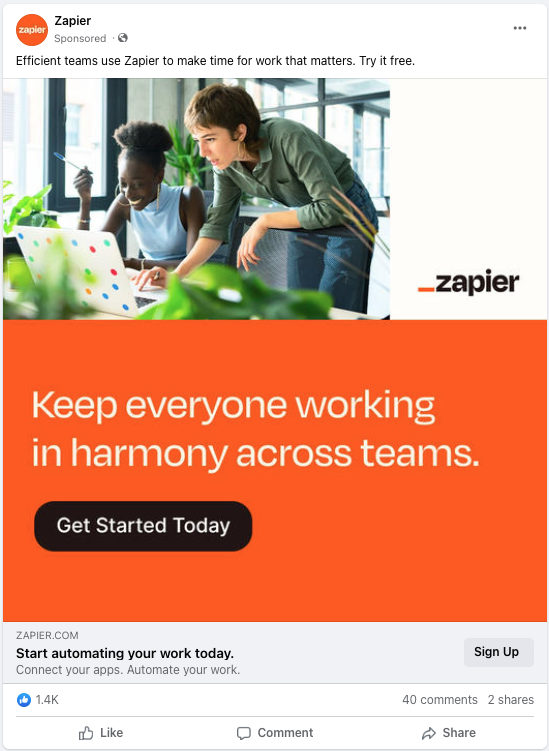
Search engine ads are more prominent. They tend to show above and alongside organic results:
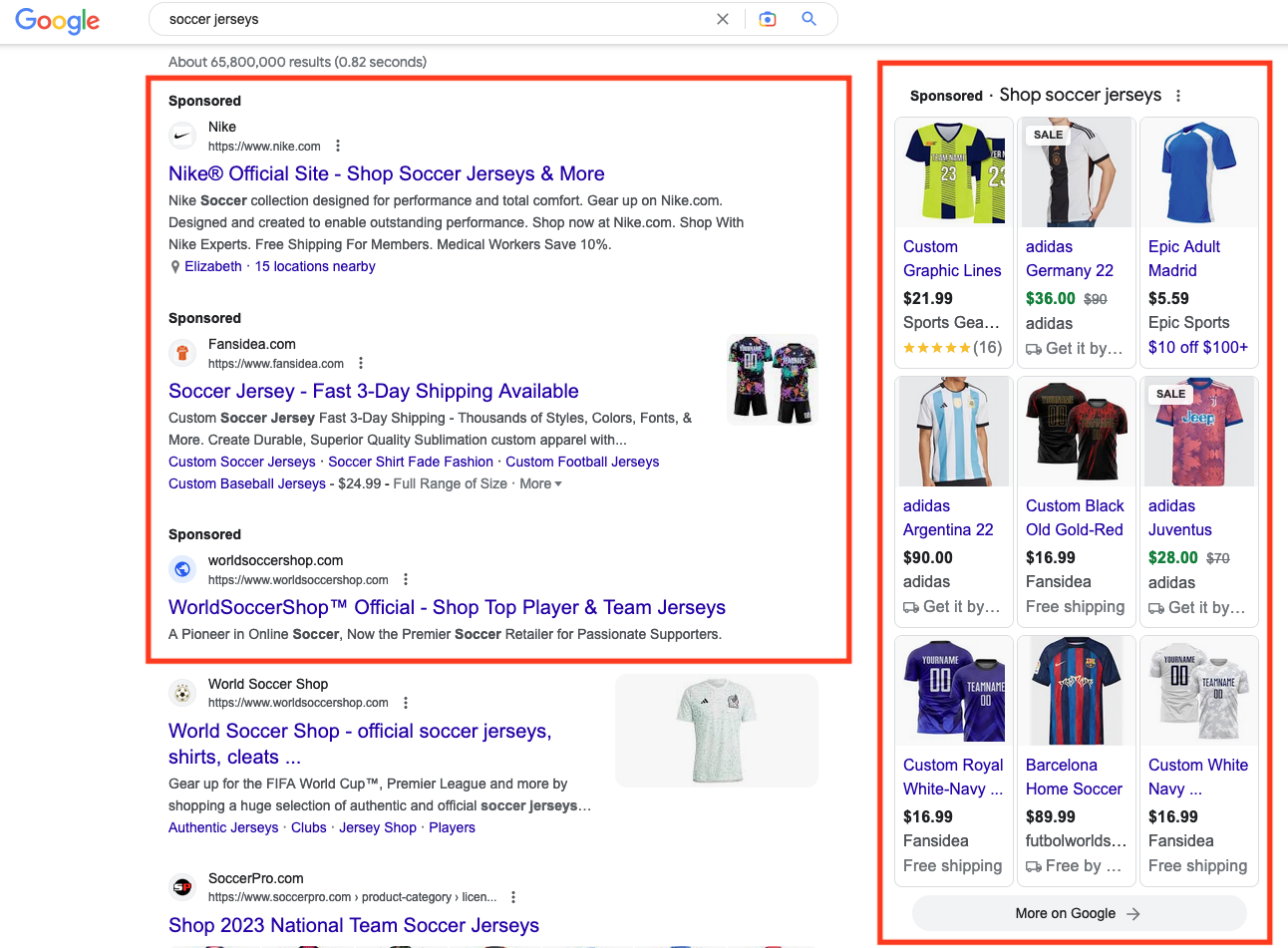
Whichever channel you use, online ads can help you reach specific audiences quickly. That makes them ideal for:
- Highlighting new product launches
- Promoting flash sales
- Building brand awareness
- Growing your email list
Learn where your ideal customers spend time to determine which ad platforms will be most valuable to your business.
6. Influencer Marketing
Influencer marketing is when businesses use high-profile figures to promote their brands, products, or services online.
For example, cell phone accessories brand CASETiFY works with influencers to promote products on Instagram:
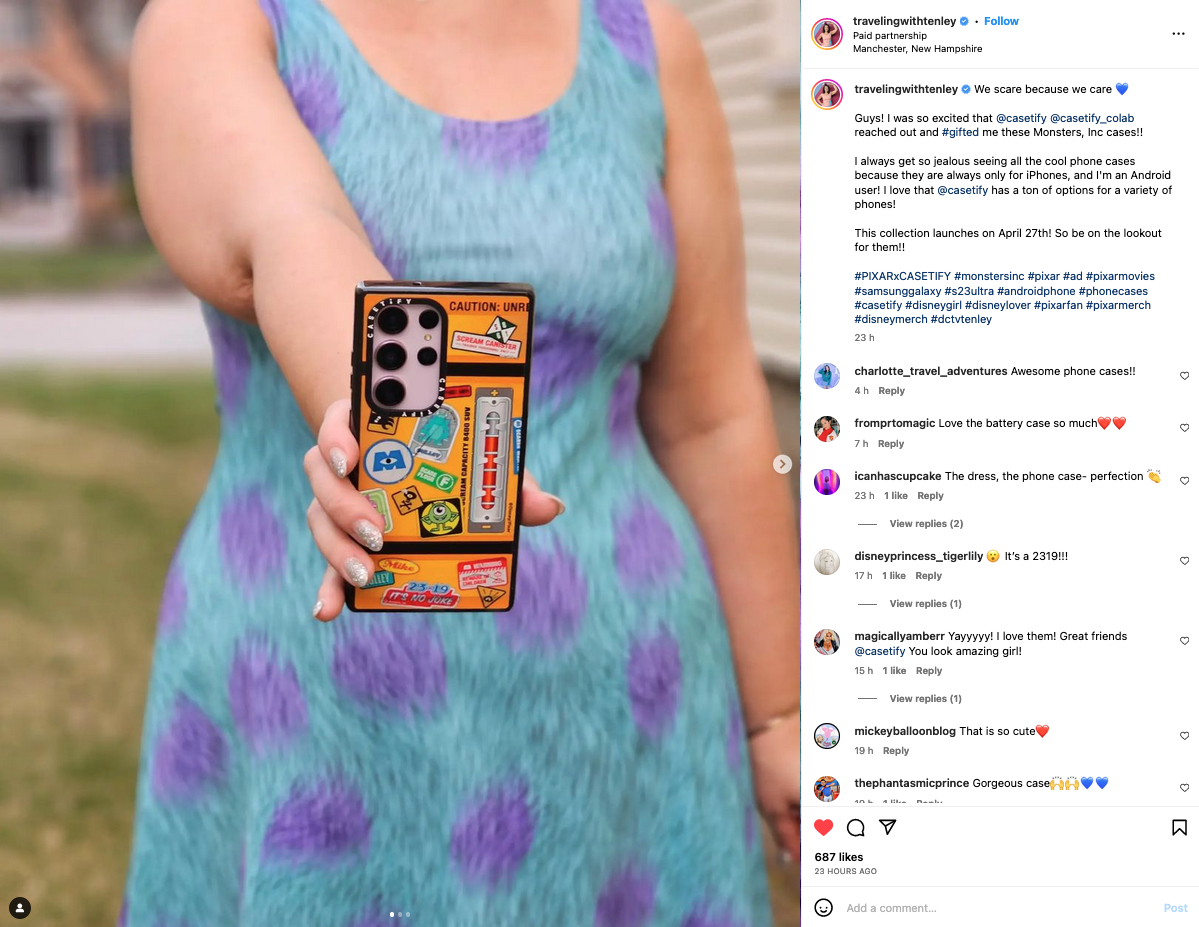
Through this collaboration, CASETiFY is able to reach the influencer’s followers. Who may be more likely to trust the recommendation.
Influencer marketing can be done as a one-time promotion. Or, you can work with influencers on an ongoing basis.
To get started, reach out to social media users with significant followings who are relevant to your niche. And propose a relationship.
Do this using Influencer Analytics.
Just select the platform you want to focus on. And then click “Filters” to narrow your search by country, price, follower count, etc.
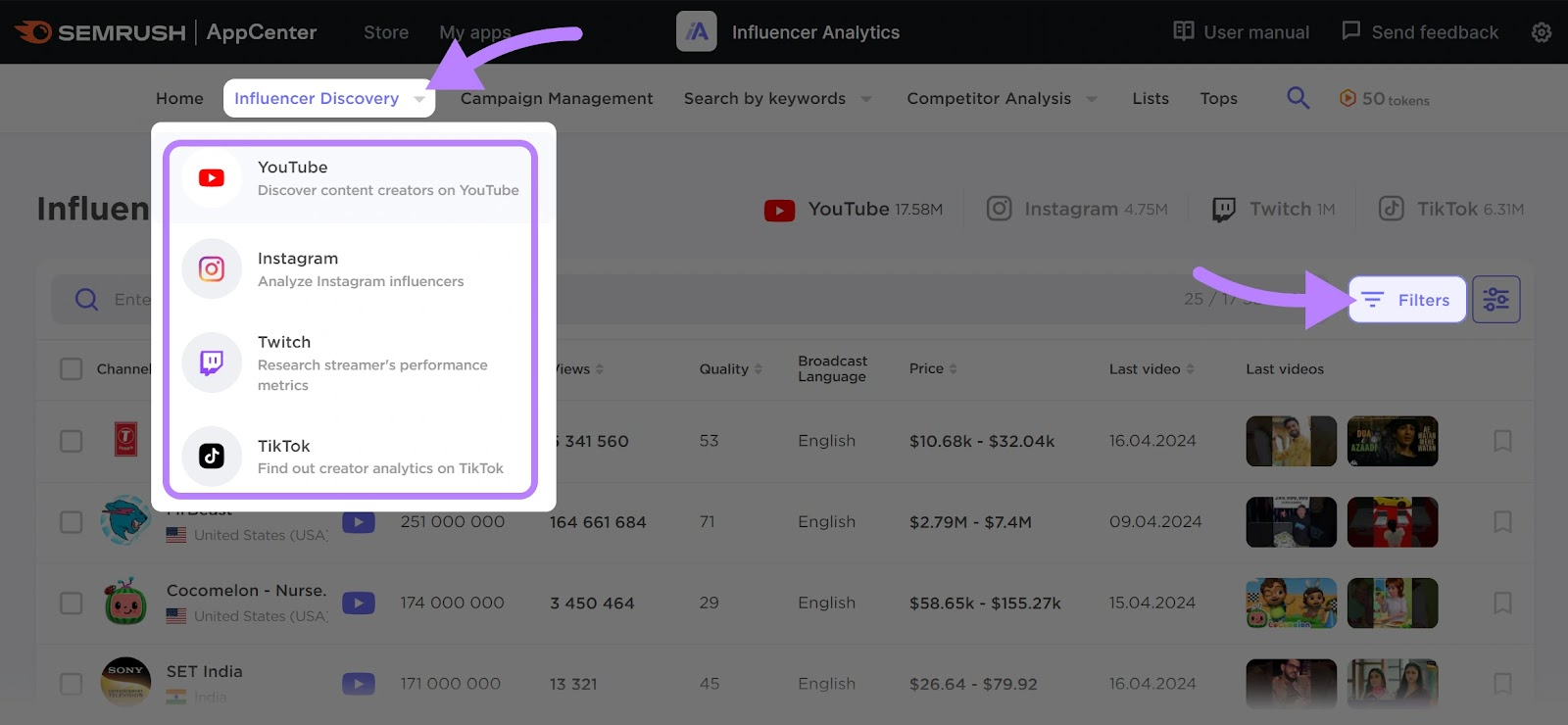
You’ll then get a list of influencers who meet your criteria.
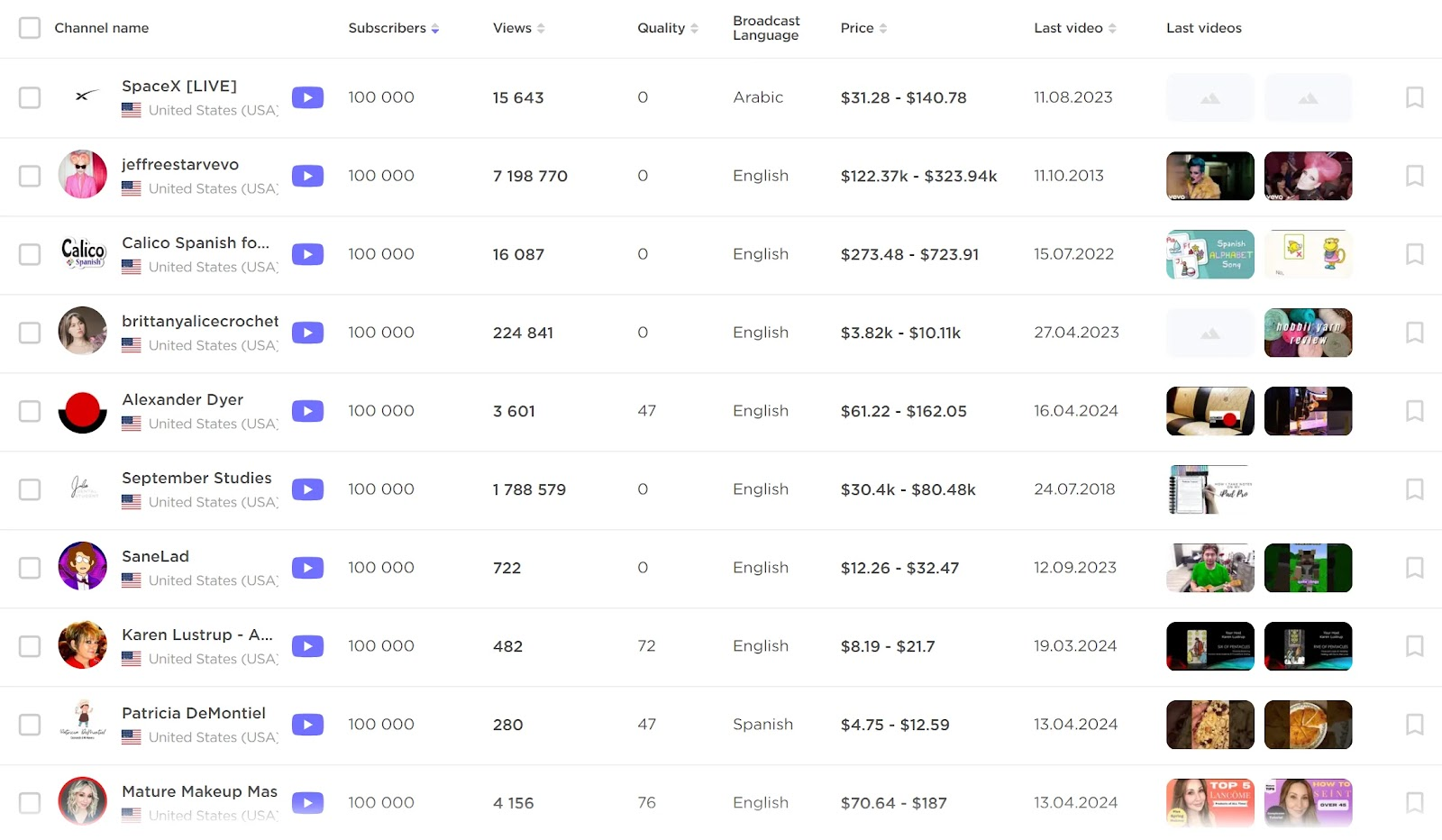
Click on an influencer for more information, including contact information. And then start your outreach.

7. Affiliate Marketing
Affiliate marketing involves paying a commission on conversions or other agreed-upon actions to an affiliate (like a publisher) that promotes your product.
For example, the gaming site Kotaku earns commissions through links on its review pages:
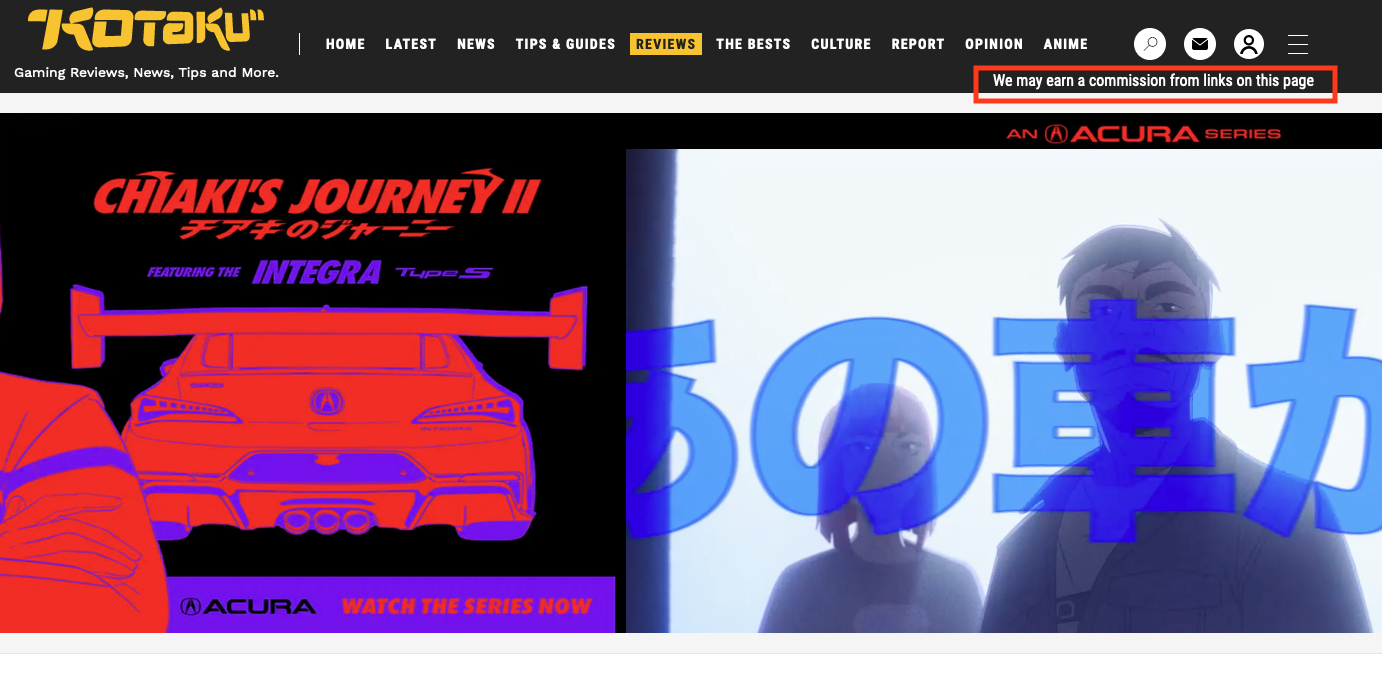
That means businesses like yours have come up with an arrangement to have their products promoted on Kotaku.
As with influencer marketing, affiliate marketing can help you tap into a popular brand’s audience. So, consider who your ideal customers trust most when building a shortlist of potential affiliates.
How to Get Started with Internet Marketing
Starting from scratch can be daunting, especially if you don’t have much experience in marketing.
So, here’s a step-by-step guide any beginner can use to build their first digital marketing strategy.
1. Define Your Target Audience
Your target audience is who you want to reach through marketing. To ensure you’re appealing to those who are likely to become customers.
You probably have a strong grasp of who your ideal customers are, but it’s worth redefining your audience when working on a new marketing strategy. Because you may have more data since you last built your customer profiles that you can dig into.
Start with data from sales and analytics tools. And note your current audience’s:
- Location or region
- Age range
- Gender
- Budget
And consider interviewing existing customers. So you can ask about each interviewee’s:
- Roles and responsibilities (for business customers)
- Biggest challenges
- Communication habits
- Interests
- Favored social media platforms
Then, use Semrush’s Market Explorer to learn more about your target audience.
Here’s a snippet of the info you’ll find:
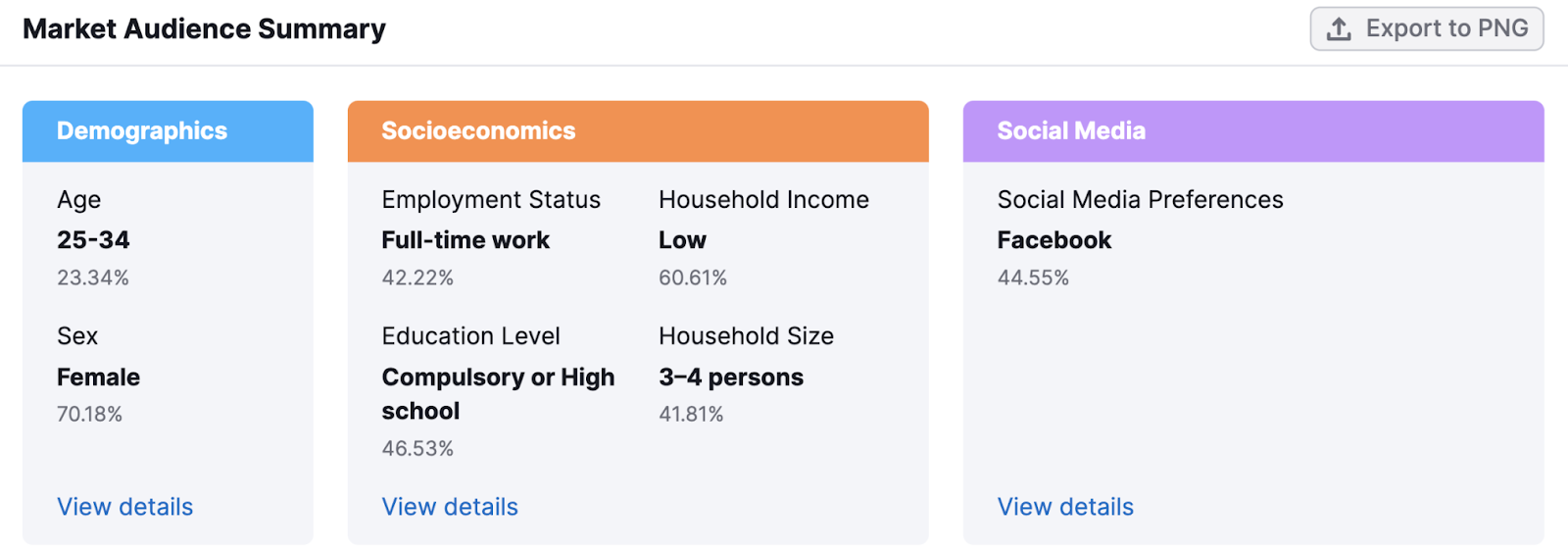
Use this data to spot shared characteristics. Which will help you tailor your marketing efforts for future customers.
2. Choose Your Platforms
Once you’ve defined your target audience, you need to focus on the platforms where they spend their time.
Most likely, you'll leverage multiple channels in your marketing strategy. And it’s a good idea to incorporate the ones you saw under “Social Media Preferences” in Market Explorer.
And make sure to ask these questions as you make your final choices:
- Which platforms will connect you with your target audience?
- What kind of content does this platform focus on?
- Does this platform provide organic or paid opportunities? Or both?
- Do you have a specific budget to devote to this platform?
- Can you easily track performance on this platform?
Just keep in mind there’s one channel every marketer needs to focus on: the website. Because it’s where users ultimately become customers.
3. Create a Content Plan
A content plan is a list of content you’re going to create to accomplish your marketing strategy. And may include blog posts, videos, advertisements, etc. depending on the channels you choose to prioritize.
If you’ve already identified some terms using the Keyword Magic Tool, try Topic Research to get more ideas for your content plan.
Type in a topic related to your products or services. Then click, “Get content ideas.”
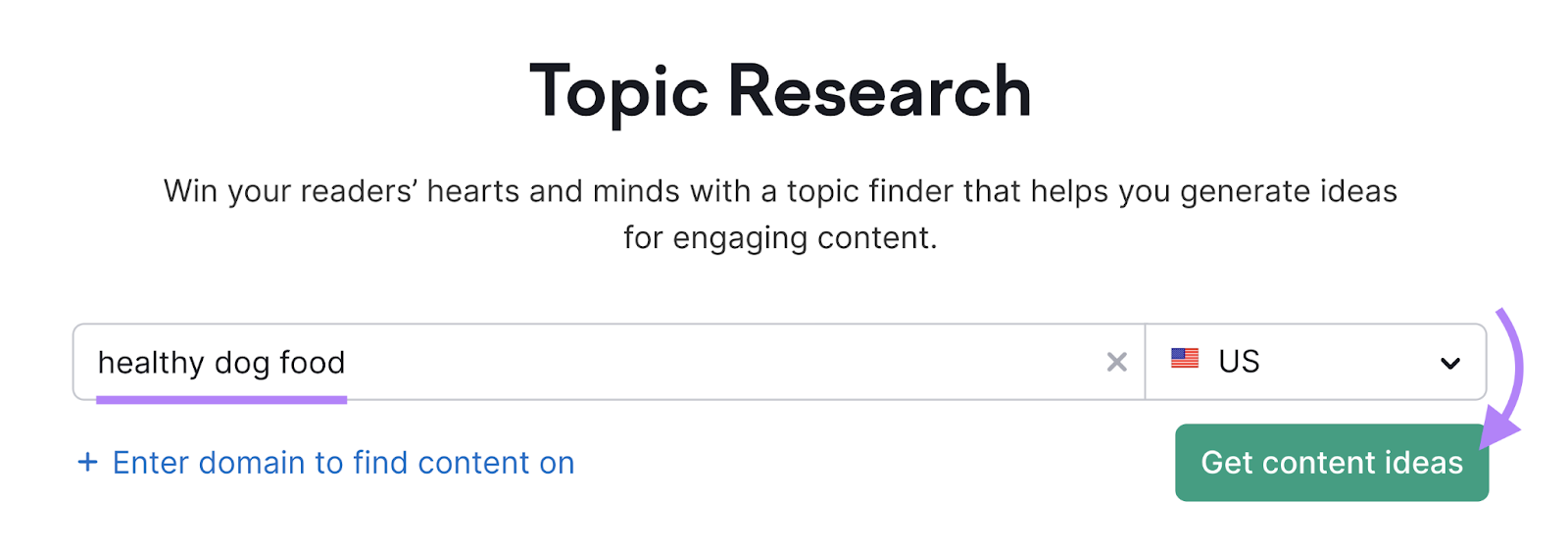
You’ll see a list of relevant subtopics.
Click “Show more” beneath any topic to expand it.

The expanded card lists headlines of existing content related to this subtopic. Plus common questions users are asking about the subtopic.
After you have a solid list of ideas, determine how you’ll execute each one. And then use a content calendar to plan out all the pieces you’ll publish across platforms.
4. Optimize Your Website
Optimizing your website for SEO can help drive organic traffic to your website. And provides a positive experience that moves prospects closer to making a purchase.
Ideally, each page of your website should be optimized for one or more keywords. To maximize your ranking potential.
Once you’ve chosen your terms, you’ll need to add your keywords (or variations of them) to key webpage elements like the title tags, meta descriptions, and the page content.
And don’t forget to use on-page SEO techniques like adding internal links, using clear and logical URLs, and more.
Implementing technical best practices is also important. Because even the best content won’t rank if there are larger issues with your site.
Use Site Audit to find technical issues.
Set up your project by following the Site Audit configuration guide.
Then, navigate to the “Issues” tab.
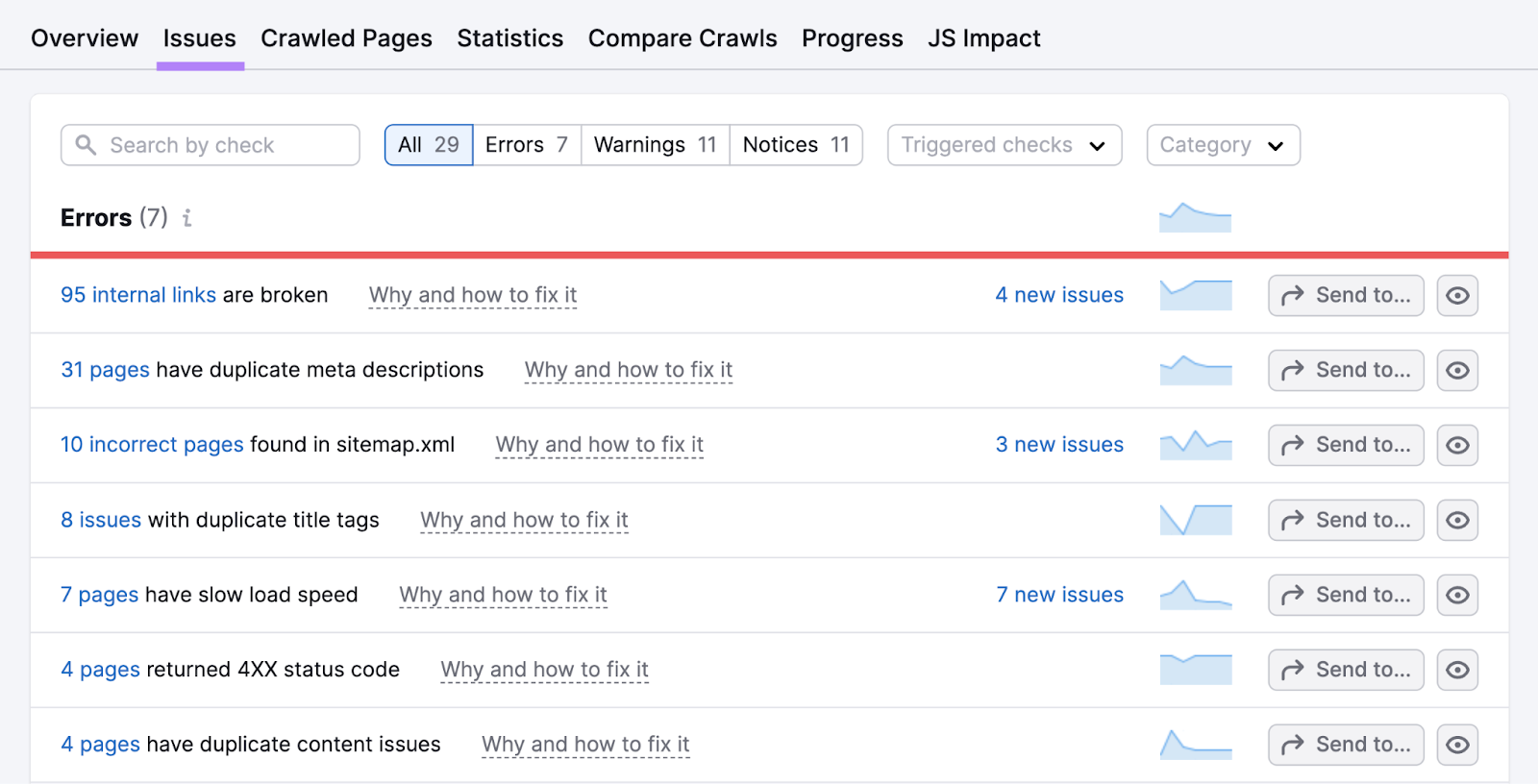
Go through the list of issues and address them one by one. Click “Why and how to fix it” next to any issue if you need guidance.
Lastly, consider doing link building. Which involves reaching out to reputable websites in your niche to ask for backlinks (links on their sites that point to your site).
Doing this can further improve your website’s SEO performance.

5. Start Using Your Other Platforms
Now that your website is in good shape, you can focus on leveraging the other channels you identified as good opportunities.
This will be a bit different for every company.
For example, you might start with sending a monthly email newsletter, running paid search ads, and posting organic social content on Facebook and Instagram.
6. Track Your Results
You’ll want to track your results to see which platforms deliver the best results for your business.
Most paid social media channels (e.g., Google Ads and LinkedIn) have clear reporting features that allow you to see which ads and campaigns are most effective.
And platforms like Google Analytics and Google Search Console will let you see:
- Where your web traffic comes from
- What search terms bring people to your website
- What content drives the most engagement
- Where visitors spend the most time on your website
Insights like these enable data-backed decision-making that can improve your ROI in the future.
Dive Deeper Into Internet Marketing
In internet marketing, it’s important to start with a solid foundation.
Start with our guides to content marketing and search engine marketing (SEM).
Then, identify the marketing tools you need to execute your internet marketing strategy.
Semrush gives you access to SEO, content marketing, and PPC tools. Try them today.


